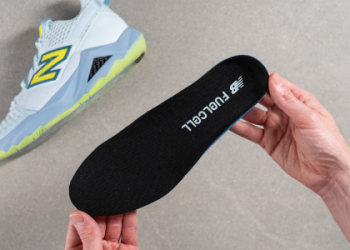I’ve been messing around with putters for a while now, and it’s been quite a journey. I mean, these things are supposed to last forever, like 15-20 years, right? So, you gotta make sure you pick the right one. It’s like the final boss battle of every hole, you either sink it for birdie or you’re left with a double bogey. Doesn’t matter if you’re a beast with the driver if you can’t putt for nuts.

I remember when I was around 14, I made a rule for myself – stick with a putter for at least a year before even thinking about switching. Sounds simple, but man, the temptation to try out new gear is real. I used to be one of those guys who’d switch putters like every other week, chasing that magic wand that would fix all my putting woes. Spoiler alert: it doesn’t exist.
The Search Begins
So, I started my quest for the perfect putter. I knew I wanted something with a thin topline, because, well, I just like how it looks. I also like my putters a bit shorter, around 33 inches. Don’t ask me why, it just feels right. It’s all about that gut feeling, you know?
I went to a bunch of golf stores, tried out a million different putters. Some felt okay, some felt terrible, and some felt like they were made for someone else’s hands. It was a long and frustrating process, but I knew I couldn’t rush it. This was a long-term commitment.
Experimentation and Frustration
Now, I’m not usually one to switch putters often. But I like to check out what’s out there, you know? Give everything a fair shot. I even tried some of those fancy new designs that promise to revolutionize your putting game. They talk a big game about how they can improve your distance control and help you hit your line better. And yeah, some of them do feel different, but did they magically turn me into a putting god? Nope.
- Trial and Error: I spent countless hours on the practice green, trying out different grips, stances, and strokes. Some days I felt like I was getting somewhere, other days I felt like I was going backward.
- The Mental Game: Putting is as much mental as it is physical. I started doubting my stroke, my read, even my own eyes. It’s a slippery slope, let me tell you.
- Seeking Advice: I talked to pros, read articles, watched videos – anything to get an edge. Some of the advice was helpful, some of it was contradictory, and some of it was just plain weird.
The Realization
Then one day, it hit me. I was on the practice green, struggling as usual, and I just stopped. I took a deep breath, looked at my old, trusty putter, and realized something. It wasn’t the putter, it was me. I was the one who needed to change, not my equipment.

I started focusing on the fundamentals. I worked on my grip, my stance, my alignment, my stroke. I practiced consistently, not just when I felt like it. And slowly but surely, I started to see improvement. My distance control got better, I was hitting my lines more often, and most importantly, I was making more putts.
It wasn’t a quick fix, and it wasn’t always easy. But it was worth it. I learned that there’s no magic putter out there. It’s all about finding one that feels comfortable in your hands and then putting in the work to master it. So, if you’re struggling with your putting, don’t immediately blame your putter. Take a look in the mirror and ask yourself what you can do to improve. That’s where the real magic happens.
So, my advice? Find a putter that feels good, even if it is old, and stick with it. Practice regularly, focusing on the basics. And most importantly, be patient. Putting takes time and effort, but it’s one of the most rewarding parts of the game when you get it right. Just remember, it is not the putter, it is the person using it. When you can no longer hit your line with your current putter or gauge distance control on long lag putts. It is time to change, but don’t throw it away, just put it aside. You may need it later.


















